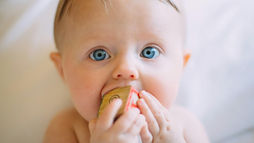

Why Chronic Stress Wrecks Your Joints (and What You Can Do About It)
Discover how chronic stress can lead to joint pain and learn effective ways to manage joint pain through stress-reducing techniques.


Gentle Remedies That Support Natural Pain Recovery
Explore Natural Pain Recovery solutions for lasting relief and health.


Exploring the Healing Power of Routine
Routine brings balance, stability, and peace. Small daily habits reduce stress, build resilience, and nurture long-term well-being.


5 Tips For Creating A Routine With Your Baby
Find out five simple ways to build a baby routine that feels natural for you. A steady rhythm helps both you and your baby feel more relaxed and connected.


Holistic Sleep Support: What Works and What Doesn’t
Discover Sleep Support methods that work. Explore natural remedies and lifestyle changes for better rest today!


The Importance of Sexual Wellness for a Balanced Life
Explore the importance of sexual wellness for improved health and relationships. Understand your body and enhance your life.


Achieve Fuller Lashes: Your Guide to Lash Growth Serums
Achieve the lashes of your dreams with lash growth serum. Learn about ingredients and habits that promote optimal lash growth.


How to Overcome the Challenges of Entrepreneurship
Explore the challenges of entrepreneurship and learn how to navigate psychological and financial pressures for sustainable success.


Essential Wellness Tips for Senior Health
Learn how to prioritize senior health for a vibrant and fulfilling life. Discover vital insights for healthy aging today.







